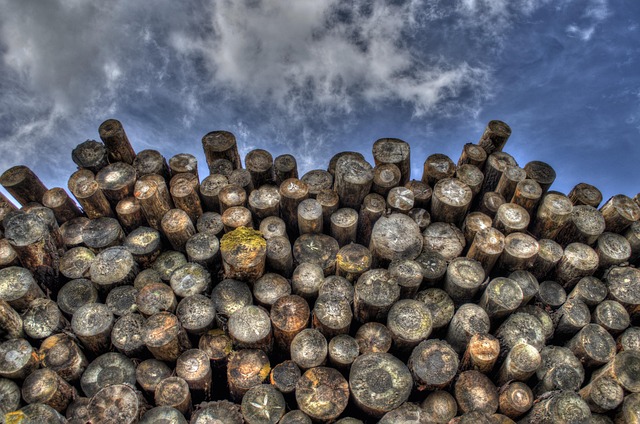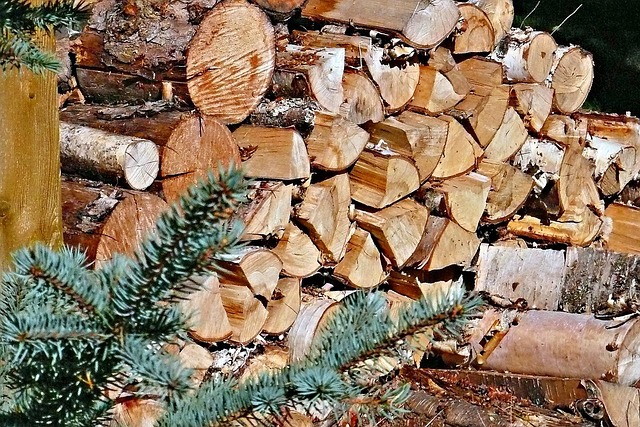In the late 19th century, Lane County, Oregon became a prominent player in the American timber industry thanks to its abundant old-growth forests and strategic coastal location. The rise of powerful businesses and entrepreneurs known as Lane County timber barons led to a thriving economy based on logging, milling, and shipping timber nationwide. Technological advancements revolutionized logging practices, but by the 21st century, traditional timber barons faced challenges from stricter environmental regulations and changing public opinion. Modernizing their operations with advanced technologies like precision logging and automated harvesting systems, these barons are now prioritizing sustainable forest management while enhancing efficiency. This transformation ensures the long-term health of the region's forests, fosters innovation, and secures a bright future for Lane County's timber industry globally.
“Lane County, Oregon, has long been synonymous with timber, boasting a rich history as home to some of the state’s prominent timber barons. This article delves into the evolution of the local timber industry, exploring its historical roots and the challenges faced by traditional timber barons in an era of rapid change. We examine modernization efforts, from adopting cutting-edge technologies to sustainability initiatives, and predict the future of Lane County’s timber industry, highlighting emerging opportunities.”
- Historical Overview: The Rise of Lane County's Timber Industry
- Challenges Faced by Traditional Timber Barons
- Modernization Efforts: Adopting New Technologies
- Environmental Impact and Sustainability Initiatives
- The Future of Lane County's Timber Industry: Opportunities and Predictions
Historical Overview: The Rise of Lane County's Timber Industry

In the late 19th century, Lane County, Oregon emerged as a prominent player in the American timber industry, fueled by an abundance of old-growth forests and a strategic location along the coast. This period saw the rise of what would become known as the Lane County timber barons—powerful businesses and entrepreneurs who monopolized the region’s natural resources. The county’s lush forests, particularly those along the Umpqua River, attracted loggers and mill owners who established a thriving economy based on logging, milling, and shipping timber to markets across the country.
The industry’s growth was not without challenges. Early methods were largely manual and labor-intensive, but technological advancements in the late 19th and early 20th centuries revolutionized logging practices. Steam-powered locomotives and sawmills replaced human and animal labor, significantly increasing efficiency and profitability for Lane County’s timber barons. This era left a lasting impact on the county’s landscape and economy, shaping its identity as a key contributor to Oregon’s and America’s timber industry.
Challenges Faced by Traditional Timber Barons

The traditional timber barons of Lane County, Oregon, have long been a cornerstone of the region’s economy and identity. However, they face significant challenges in modern times. The industry is no longer defined by vast clear-cut logging operations; instead, it must adapt to evolving environmental regulations, shifting public perceptions about deforestation, and the increasing demand for sustainable forest management practices.
These Lane County timber barons, once powerful and dominant, now grapple with a need to modernize their operations. They must balance their economic interests with conservation efforts, adopt new technologies, and navigate complex regulatory landscapes. The transition is not easy, but it’s necessary if they want to remain relevant in an era where environmental stewardship and sustainability are at the forefront of public discourse.
Modernization Efforts: Adopting New Technologies

Lane County, Oregon’s timber industry has been a cornerstone of its economy for decades, with a rich history of timber barons shaping the region’s landscape. However, as the 21st century approached, the industry faced a new challenge: modernization. To stay competitive and sustainable, local businesses began embracing new technologies, marking a significant shift in their approach to forestry.
The adoption of advanced machinery, such as precision logging equipment and automated harvesting systems, has increased efficiency while minimizing environmental impact. Furthermore, digital mapping and remote sensing technologies enable more accurate forest resource assessments, aiding in sustainable yield planning. These modernization efforts not only enhance productivity but also attract a new generation of forward-thinking timber barons eager to preserve the industry’s legacy while embracing innovation.
Environmental Impact and Sustainability Initiatives

Lane County, Oregon, known for its rich timber resources, has witnessed a significant transformation in recent years as the traditional timber industry embraces modernization. Among the key aspects of this shift is a growing emphasis on environmental sustainability. The former timber barons of the region are now adopting eco-friendly practices to ensure the long-term health of forests and ecosystems.
Initiatives include responsible forest management, where companies carefully plan and execute logging activities to minimize damage to surrounding habitats. They invest in advanced technology for precision cutting and efficient transportation, reducing road wear and environmental disruption. Additionally, there’s a push for reforestation and conservation projects, aiming to restore and protect the diverse flora and fauna native to Lane County’s forests. These efforts not only contribute to a more sustainable industry but also ensure that future generations can continue to benefit from the region’s natural resources.
The Future of Lane County's Timber Industry: Opportunities and Predictions

The future of Lane County’s timber industry looks promising, with opportunities arising from both traditional and innovative sectors. As new technologies continue to reshape the industry, local timber barons are embracing modernization while preserving their rich legacy. Advanced machinery and sustainable harvesting practices are becoming the norm, ensuring a balance between resource extraction and environmental preservation. This shift not only promises a more robust and resilient industry but also opens doors for diverse career paths in forestry, eco-tourism, and advanced wood manufacturing.
Predictions indicate that Lane County’s timber industry will remain competitive globally due to its high-quality forests and commitment to sustainability. The region’s expertise in forest management and the local workforce’s adaptability will drive innovation in product development and market diversification. From precision logging to value-added wood products, there is a growing emphasis on creating unique, sustainable, and environmentally friendly goods. This future-forward approach will likely attract investment while ensuring the industry’s longevity and positive impact on the local economy.
